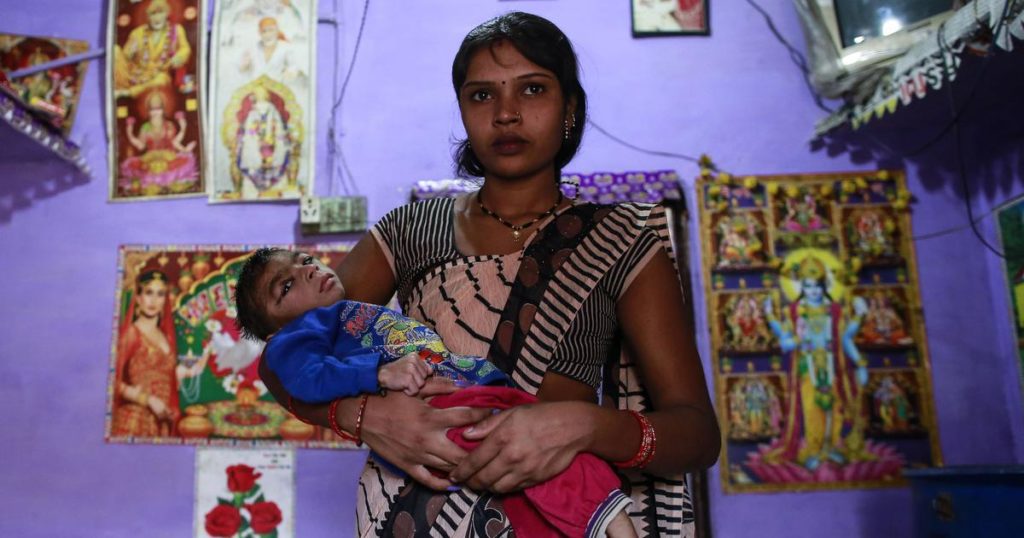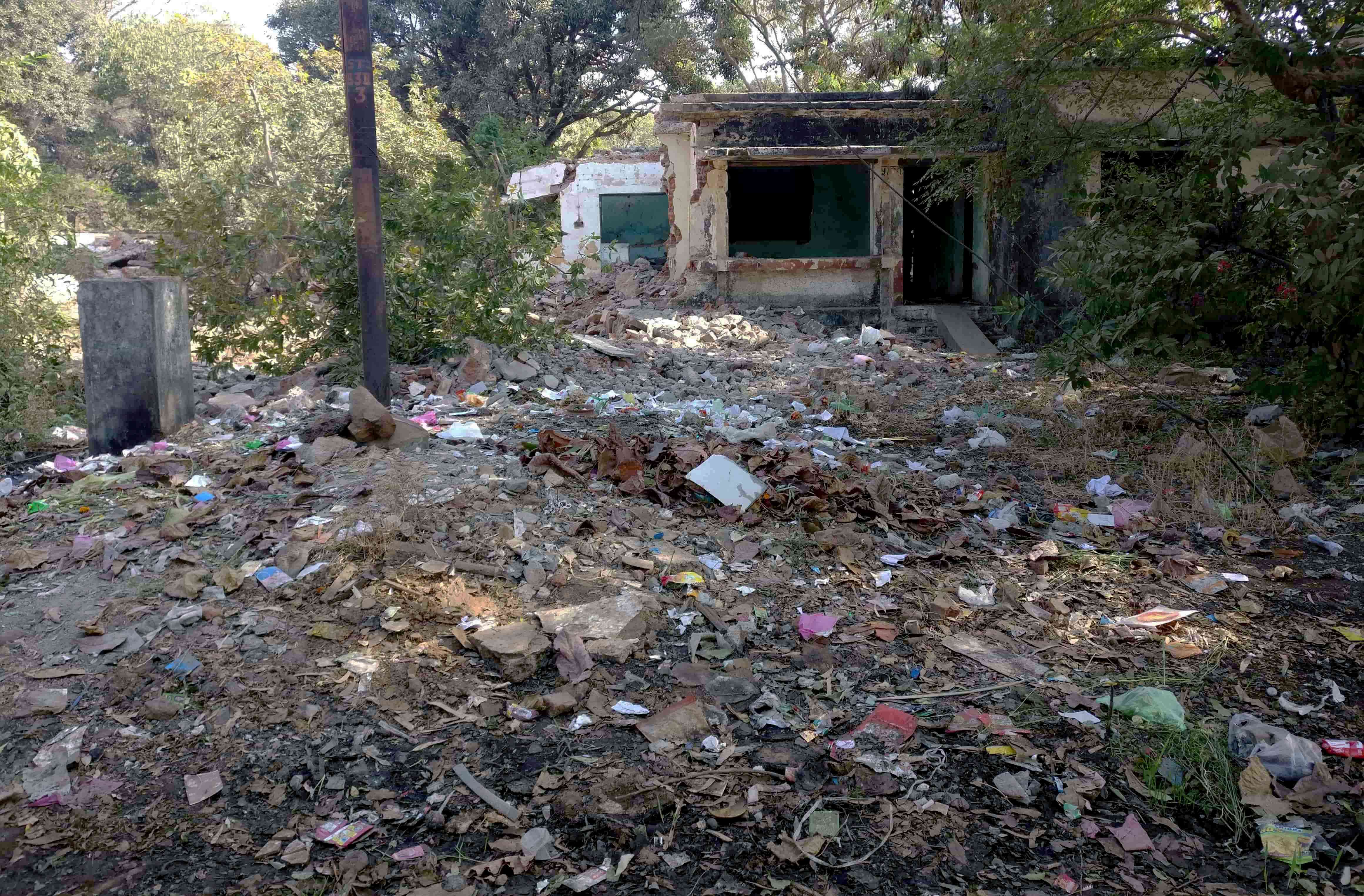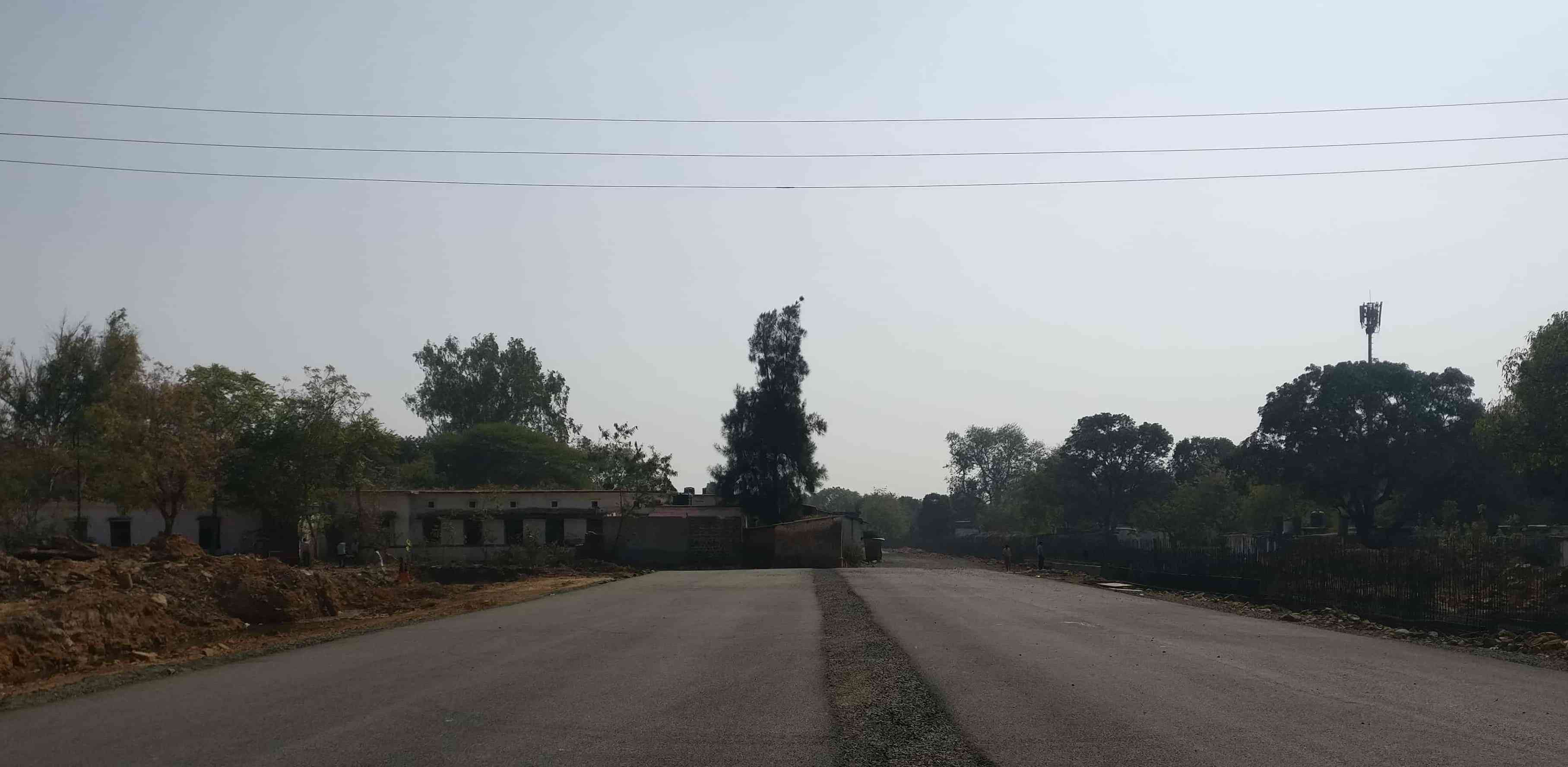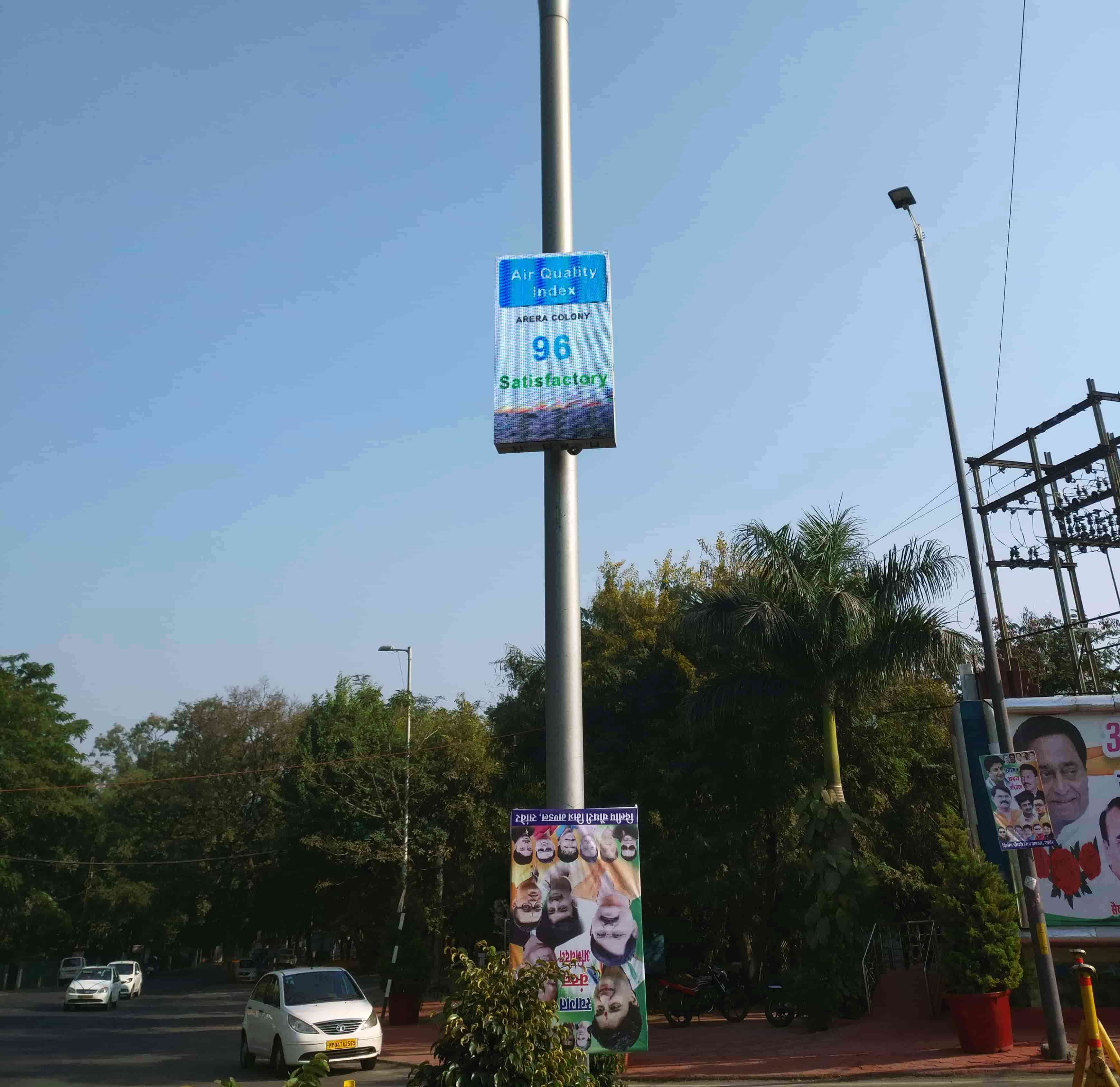
Komal and her son Sagar live in a Bhopal slum. Photo: Reuters
Madhya Pradesh’s capital is among the first 20 cities chosen for redevelopment under the Narendra Modi government’s Smart Cities Mission.
The brochures sell a dream: new residences, services accessed through mobile phone apps, outdoor gymnasia, automated monitoring of everything from garbage collection to streetlights, and pavements without hawkers.
This dream will unfold in Bhopal once Madhya Pradesh’s capital is reshaped into a smart city. Among the first 20 cities selected for redevelopment under the Narendra Modi government’s Smart Cities Mission, Bhopal must provide all basic infrastructure and services, it must use technology in their delivery and find ways to generate revenues.
Currently, the most visible feature of this enterprise are bulldozers. Eleven schools, one hospital, 3,000 quarters for government employees, hundreds of shops and two slum clusters have been razed or await demolition by the Bhopal Smart City Development Corporation, a company established for turning Bhopal smart.
Unlike other cities that are “retrofitting” existing colonies to make them smart, Bhopal is developing a “smart area” from scratch. North and South Tatya Tope Nagar wasn’t the first choice, however. The Bhopal Municipal Corporation’s original proposal was to redevelop Shivaji Nagar and Tulsi Nagar. But their residents protested. With retired doctors, journalists and bureaucrats in their ranks, their voices were heard. The axe then fell on North and South TT Nagar.
Through 2017 and 2018, those in the government quarters were moved to another place. As a consequence, Indira Market on Bhadbhada Road, which separates North from South TT Nagar, started losing customers. Mohammad Israr, a cosmetics store owner who serves as the market association’s secretary, estimates that most of over 500 shops have seen their sales halve.
Not far from Israr’s shop, a new road is under construction. It will intersect another road that is almost ready. Their names encapsulate the vision of Bhopal’s smart city administrators: Smart Road and Boulevard Street.
Bhopal’s new roads will have cycling and walking tracks and “smart poles” with cameras to enable the residents to access the internet, read pollution data and charge electric vehicles. Its Dusshera Maidan, or ground, will have eight basketball courts and an academy. Its smart park feature wifi hotspots and a food court and harvest water.
Most people in North and South TT Nagar, however, struggle to understand where they fit in this gilded vision of a sanitised, gentrified Bhopal. Residents of the slum clusters along the Smart Road were placed in transit housing. They do not know where they will finally end up. Teachers at a government school which juts into Boulevard Street do not know where they or the children will be sent.
That is because information from the administrators is hard to come by. Whatever Israr knows about the redevelopment, he has learned from newspapers. Similarly, one of the first smart projects to be completed was an app-based bicycle sharing system. Of its 50,000 registered users, 5,600 are regular. But ordinary people are convinced these are morning walkers cycling for exercise.

Much of TT Nagar is little more than rubble and tree stumps now. Photo credit: Shreya Roy Chowdhury
‘Lack of accountability’
The proposal for developing the smart city is submitted by the state government and the municipal corporation but executed by a “special purpose vehicle”, a company in which the government has the majority stake but may include private firms as well.
The company gets the funds – Rs 500 crore each from the Centre and the state over five years – and is responsible for developing smart areas and maintaining the full range of services.
The Bhopal Smart City Development Corporation has state and municipal officers on its board but no elected representative. It is housed in a new luxurious building next to the dingier offices of the Bhopal Municipal Corporation. It is well-funded and empowered to generate revenues by outsourcing services and initiating partnerships with private players. Its budget is separate from the municipal corporation’s. There is an advisory body that includes elected representatives, but its recommendations are not binding.
This arrangement is worrying a section of citizens. For, in effect, powers are being shifted from the elected municipal corporation to a body that performs the same functions but is controlled by the bureaucracy and potentially private investors, explained Gaurav Dwivedi of the Centre for Financial Accountability.
“An elected body would be answerable to the public,” said Dwivedi, who is part of a group of researchers tracking the progress of the smart city mission in Bhopal.
Since most members of the company’s board are from the state bureaucracy, the activists argue the mission undermines the 74th Constitutional Amendment that decentralises governance and empowers urban local bodies.
Politicians resent being kept out of the loop. “We will ask the chief minister to review the entire project,” said PC Sharma, the Congress MLA who represents the area being redeveloped. “Elected councillors must know how rehabilitation will happen, where shops will be assigned and how slums will be managed.”
The company’s CEO, Sanjay Kumar, is aware of the “anxiety” the mission has caused but argued that involving “political people” would slow down implementation of the project. In any case, he said, standard services outside the 342 acres of TT Nagar and the smart roads will remain with the municipal corporation.

Shaskiya Madhyamik Shala Deepshika juts out into the Boulevard Street. Photo credit: Shreya Roy Chowdhury
Raising the money
Bhopal’s smart city project was originally estimated to cost Rs 2,718 crorebut the amount was later revised to around Rs 3,500 crore. Rs 1,000 crore will come from government and the company must raise the rest on its own.
How does the company plan to raise the money?
Alongside multistorey government quarters, TT Nagar will be new commercial and entertainment areas. Boulevard Street will have underground tunnels on either side bearing all utilities. This will leave around 100 acres of land “for monetisation”. The land will be converted into small plots and sold to private developers. The company expects to fetch Rs 2,500 crore from the sale.
Much of TT Nagar is little more than rubble and tree stumps now. By late December, trees and buildings on either side of what will be Boulevard Street had been cleared and the land levelled, leaving Shaskiya Madhyamik Shala Deepshika, a government school till Class 8, standing alone. Though its enrolment has not suffered because of the surrounding destruction, attendance has.
“The roads are closed so some children have to walk longer to get here,” explained a teacher who requested not to be named. “Attendance of small children and girls has come down.”
In class, they must contend with the noise and dust of construction. Many find it hard to concentrate. “Even children living outside TT Nagar attend the school. They will be affected,” Sharma pointed out.

A smart pole at Polytechnic Chowk. Photo credit: Shreya Roy Chowdhury
While the major overhaul is restricted to a specific area within the city, the mission also mandates “pan-city solutions”, essentially technology-based interventions that make systems such as parking, emergency response, traffic management, water supply and sewage treatment more efficient.
In Bhopal, these projects are also potential sources of revenue. They include three multilevel car parks, a biomethanation plant to manage solid waste and the bicycle sharing service. The cycle service has been outsourced to a private company called Chartered Bikes. Once it starts turning a profit, it will pay royalty to the Smart City Corporation.
Similarly, a new website connects the residents with police-verified workers such as plumbers, carpenters, electricians and beauticians. They charge a minimum of Rs 200 a visit and the Smart City gets a small cut of 3% to 10% depending on the service.
More substantial revenues are expected from “smart streetlights” and “smart poles” being installed by Bharti Infratel and Ericsson at a combined cost of Rs 640 crore. So far, 18,500 of the 20,500 halogen streetlights have been replaced with LED ones. The rights to advertise on them belong to the private installer that must share its profits with the Smart City. Similarly, revenues generated from the 400 smart poles and the 180-km of optical fibre laid underground will be shared by the private firms and the Smart City.
Keeping track of all the smart poles, streetlights and traffic cameras is the Intelligent Traffic Management System hub in the Smart City’s office. From this hub, workers of the private firms setting up these systems will watch seven roads and 22 junctions for traffic violations and ensure all lights are running.
The Smart City, with the help of Deloitte, has also set up a startup incubation centre called B-Nest in the hope that when the startups grow enough to generate revenues, the company can own some stake in them.
‘Throwing out the poor’
Ordinary citizens, however, seem disconnected from this grand scheme.
Both the Smart Road and the TT Nagar development projects have resulted in the eviction of the poor. In March 2017, more than 30 families living in Depot Basti, a slum, were moved into a cluster of tin sheds. Many of the displaced people were employed as domestic workers or handymen in the government quarters. As the quarters came down, they lost employment as well, said Rinky Patel, one of the displaced women.
Another 200 families from Hasnat Nagar, which is part of the Banganga slums bordering the Smart Road, lost their homes and were placed in transit housing. Gauhar, a mother of three abandoned by her husband several years ago, lost both her home and shop. The colony’s residents, most of them Muslim, resisted the demolitions but through the year homes were razed and the families moved out.
Gauhar got a document from the officials who moved her out showing that she has been allotted a transit house. The paper does not carry an official seal, though. She does not have anything to indicate where she might end up.
Shabana, also from Hasnat Nagar, has a certificate from the municipal corporation stating that she was chosen for housing under the Pradhan Mantri Awas Yojana. No one could say why some residents have been selected for housing and not others.
In the confusion created by a multiplication of local authorities – a situation activists had warned about – the dozens of families placed in transit housing appealed to their ward representative and municipal corporation for help but to no avail.
Kumar claimed they will receive “alternative housing” in the area but the families said they have not been told anything and resented being moved. “Some of us had taken loans to build pucca homes,” said Ronak Jahan, referring to a brick and mortar house. “We have not been told until when we have to stay here. If you throw the poor out, the city automatically looks smart.”
The article, first published on the Scroll.in, can be accessed here.
